Yao Jui-chung (姚瑞中) recites a Buddhist sutra each time he visits hell. The grotesque scenes in there are not for the squeamish, with demons dumping people in pots of scalding oil, pulling their tongues out and gouging out their eyes.
These dioramas of underworld torture can be found in numerous temples across Taiwan, most notably the bizarre animatronic scare-fest at Tainan’s Madou Daitian Temple (麻豆代天府) that’s touted as the bloodiest and most terrifying haunted house in the nation. For the past three years, Yao has been taking pictures of these displays, and on Sunday his latest photography collection, Hell+ (地獄空), was released to mark Ghost Festival.
So far, Yao hasn’t encountered anything too spine-chilling with this project — although he says he was haunted by three offended deities during his previous work Incarnation (巨神連線), where he made black-and-white large format prints of plus-size Buddhist and Taoist statues from more than 230 local temples. The effort earned him the top prize for visual arts during 2017’s Taishin Art Awards (台新藝術獎).
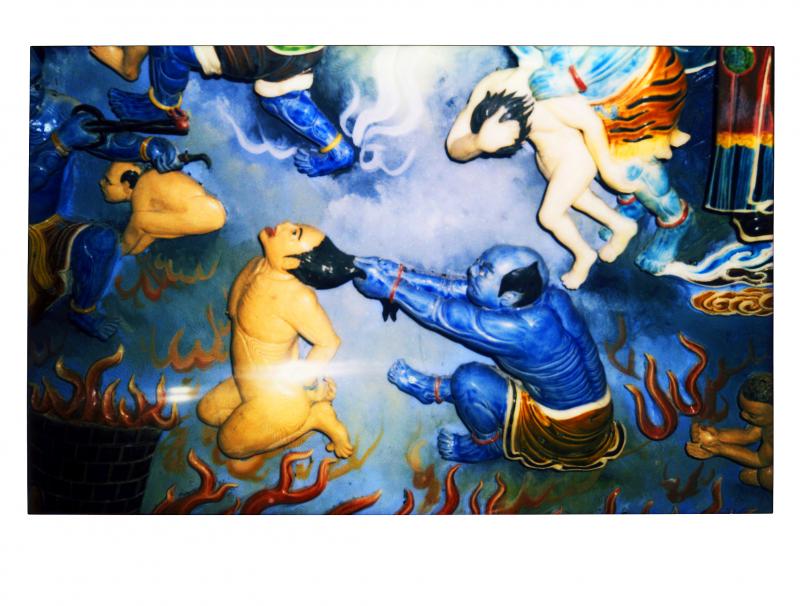
Photo courtesy of Yao Jui-chung
WHIMSICAL UNDERWORLD
In contrast to the monumental, somber tone he used to document the gods, Yao went with Polaroids on gold paper for the scenes of hell. These displays are becoming less common, and the images mainly come from seven Taiwanese temples as well as the Haw Par Village theme park in Singapore. They are interspersed with related imagery Yao shot during his travels.
“I want to make heaven look like hell and hell look like heaven,” Yao says. “I used Polaroids because I wanted to portray hell as colorful and whimsical; the tones, focus and lighting are all slightly off as if one was getting a peek into the netherworld through a guanluoyin (“visiting hell”) ritual.”
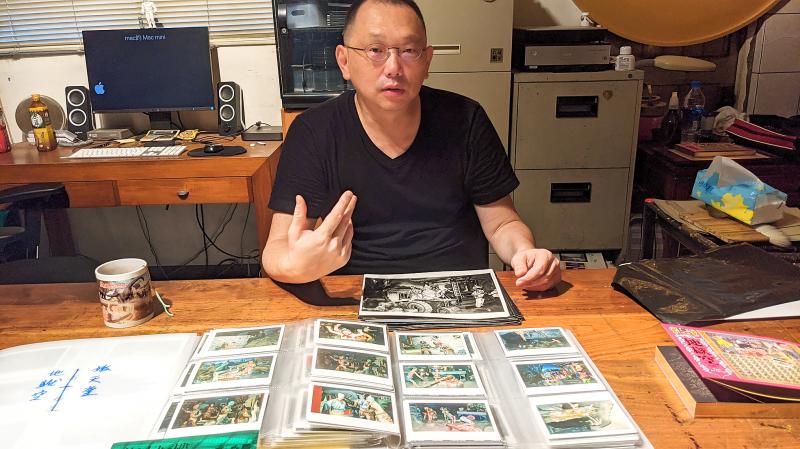
Photo: Han Cheung, Taipei Times
Yao found it difficult to sell the book to publishers due to its ominous nature, especially in light of the COVID-19 pandemic, and he quips that this is a “once-in-a-lifetime book.”
In addition to religious reservations, Yao says this sort of local folk art is often disregarded in the fine arts world as vulgar and kitschy, but he sees an “eerie beauty and quirky loveliness” in these aesthetics that are unique to Taiwan.
“I think these aesthetics are way more intriguing than a Michaelangelo,” Yao says. “Instead of portraying the ideal muscular body as they did in the West during the Renaissance, these figures look quite peculiar with their chubby bodies and short arms. The style is actually more relatable to the common person in comparison.”
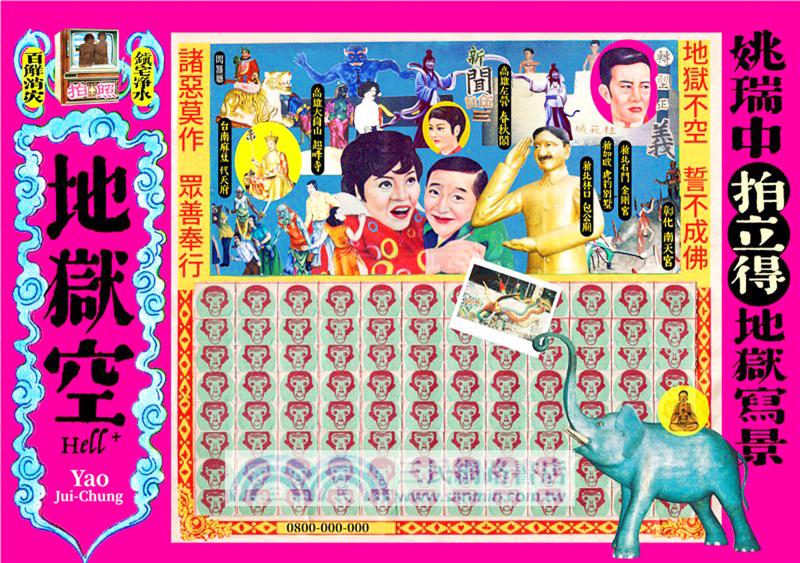
Photo courtesy of Yao Jui-chung
CONVERSION TO BUDDHISM
Personally, however, they are part of his spiritual explorations after converting to Buddhism around 2017.
“The concept of hell is a phenomenon that arises from our desires, so the message of Hell+ is really about cultivating all good, purifying the mind and creating no evil,” Yao says. “If one can let go of all attachments, then there will no longer be a difference between heaven and hell because it doesn’t matter anymore.”
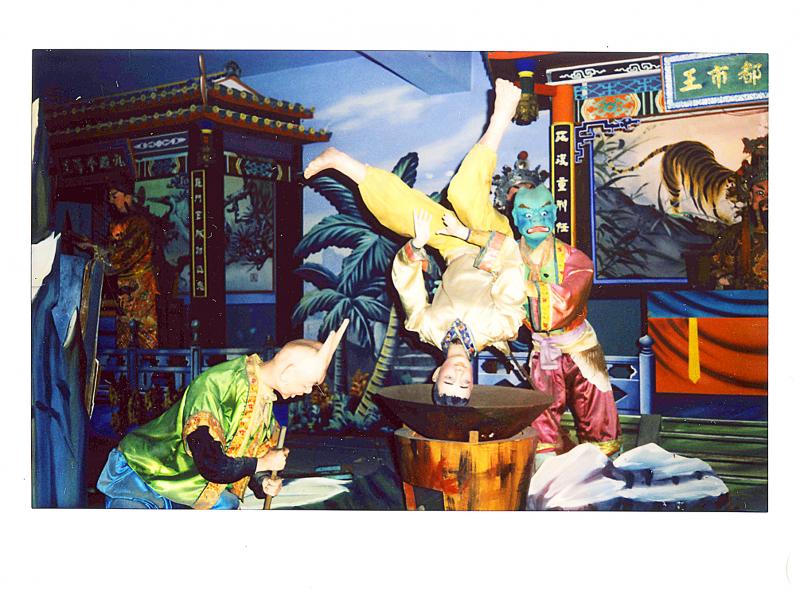
Photo courtesy of Yao Jui-chung
Yao hopes to complete projects on each of the Buddhist six realms of existence during his career. His previous work dealt more with the human realm as it highlighted social and political issues, but he started delving more into the afterlife starting from Incarnation.
Last year’s Taiwan Biennial at the National Taiwan Museum of Fine Arts, which Yao curated, was titled Sub Zoology (禽獸不如) and explored issues related to the animal realm.
In 2016, Yao says his mother went missing after the two had an argument. One night, a female bodhisattva came to him in a dream and told him to start taking photos of large Buddha statues. He started doing it immediately, and after a month or so his mother reappeared.
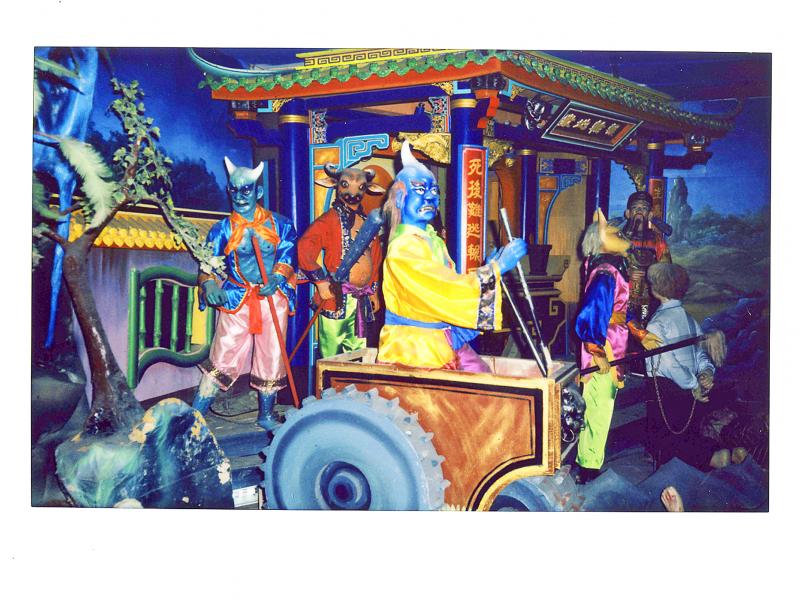
Photo courtesy of Yao Jui-chung
“I still don’t know where she went,” he says. “But I finished the project to fulfill my promise, and also started studying Buddhism because I wanted to know more about what these temples were about.”
The following year, Yao checked in to a hospital for an irregular heartbeat, and the doctor told him he needed an emergency operation to insert a stent in his heart or risk losing his life.
“I felt that death was so close to me, and I started thinking a lot about what is death and the afterlife,” he says. “I then realized that these statues we worship are only a projection of our fervent desires.”
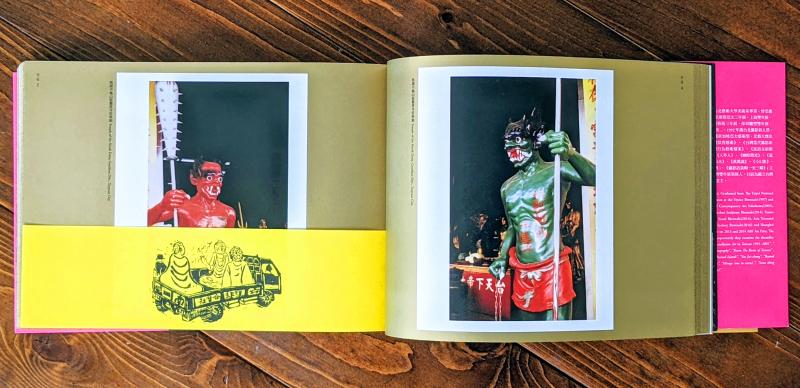
Photo: Han Cheung, Taipei Times
Giant religious statues are plentiful across Taiwan, but scenes of hell are not as common as many find them terrifying. For example, Yao says Fo Guang Shan Monastery only offers dioramas of heaven to the public — the staff there told him that there’s not much use in scaring people and it’s more effective to show them what paradise looks like.
Like most of his work, Yao doesn’t include human activity in his images.
“I always try to go when there are few visitors,” he says. “There are too many people shooting rituals and ceremonies already. I’m not looking at that, I’m more interested in the architecture, statues and scenery created by our desires.”
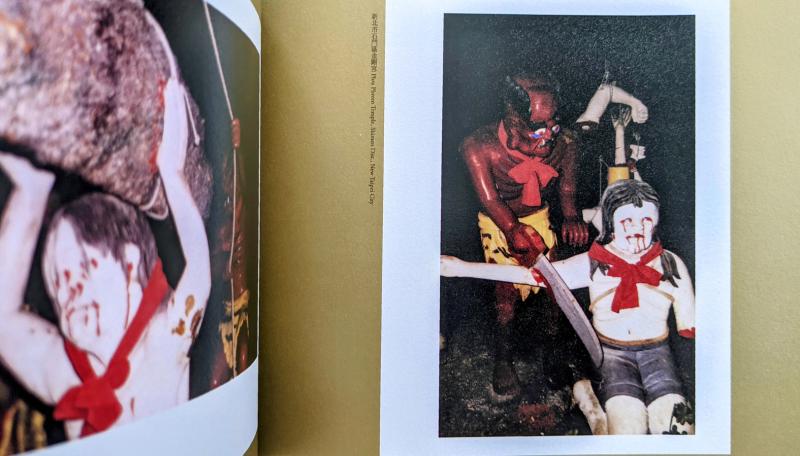
Photo: Han Cheung, Taipei Times
It’s the same concept as his decade-long, systematic documentation of Taiwan’s idle public property dubbed “mosquito halls” — expensive, highly-touted projects that ended up abandoned for various reasons.
“People give money to the government and they build mosquito halls, people give money to the temples and they build giant statues,” he says.

This is the year that the demographic crisis will begin to impact people’s lives. This will create pressures on treatment and hiring of foreigners. Regardless of whatever technological breakthroughs happen, the real value will come from digesting and productively applying existing technologies in new and creative ways. INTRODUCING BASIC SERVICES BREAKDOWNS At some point soon, we will begin to witness a breakdown in basic services. Initially, it will be limited and sporadic, but the frequency and newsworthiness of the incidents will only continue to accelerate dramatically in the coming years. Here in central Taiwan, many basic services are severely understaffed, and

It is a soulful folk song, filled with feeling and history: A love-stricken young man tells God about his hopes and dreams of happiness. Generations of Uighurs, the Turkic ethnic minority in China’s Xinjiang region, have played it at parties and weddings. But today, if they download it, play it or share it online, they risk ending up in prison. Besh pede, a popular Uighur folk ballad, is among dozens of Uighur-language songs that have been deemed “problematic” by Xinjiang authorities, according to a recording of a meeting held by police and other local officials in the historic city of Kashgar in

Jan. 5 to Jan. 11 Of the more than 3,000km of sugar railway that once criss-crossed central and southern Taiwan, just 16.1km remain in operation today. By the time Dafydd Fell began photographing the network in earnest in 1994, it was already well past its heyday. The system had been significantly cut back, leaving behind abandoned stations, rusting rolling stock and crumbling facilities. This reduction continued during the five years of his documentation, adding urgency to his task. As passenger services had already ceased by then, Fell had to wait for the sugarcane harvest season each year, which typically ran from

The People’s Republic of China (PRC) was out in force in the Taiwan Strait this week, threatening Taiwan with live-fire exercises, aircraft incursions and tedious claims to ownership. The reaction to the PRC’s blockade and decapitation strike exercises offer numerous lessons, if only we are willing to be taught. Reading the commentary on PRC behavior is like reading Bible interpretation across a range of Christian denominations: the text is recast to mean what the interpreter wants it to mean. Many PRC believers contended that the drills, obviously scheduled in advance, were aimed at the recent arms offer to Taiwan by the